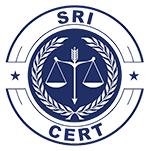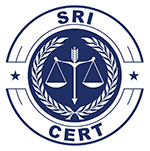
ConSASS stands for Construction Safety Audit Scoring System. Central to ConSASS are the audit checklist and scorecard, which are used to evaluate the effectiveness and maturity level of the company’s occupational safety and health management system (SHMS).


The Construction Safety Audit Scoring System (ConSASS) is an audit tool which provides an independent assessment of the safety and health management system at a worksite.
ConSASS provides a profile of the development status and maturity level of each component of a worksite’s safety and health management system. This helps management to better allocate resources in order to elevate standard and improve the effectiveness in managing a worksite’s safety and health risks. As an assessment tool, ConSASS can be used for cross-comparison between worksites in relation to their effectiveness in managing workplace safety and health risks.
Audit Objective
- Unified assessment method in term of standardisation of audit checklist and adoption of a common audit scoring system. This would enhance the consistency in the auditing process and allow cross comparison of worksites in terms of the capabilities in managing safety and health risk.
- Mechanism to profile the maturity level for each element of the SHMS in a worksite. With availability of the maturity profile, the management of the worksite could systematically focus its attention to improve the weaker elements in order to elevate the overall maturity of their SHMS to manage safety and health risk.
- Determine whether Project’s WSH Management System, or parts of it, conforms to audit criteria;
- Determine the ability of the Project’s WSH Management System to ensure the organization meets applicable statutory, regulatory and contractual requirements
- Determination of the effectiveness of the WSH Management System to ensure the project can reasonably expect to achieving its specified objectives
- As applicable, identification of areas for potential improvement of the WSH Management System.
Audit Criteria
Requirements for the Construction Safety Audit Scoring System (ConSASS)
Audit Scope
Construction Worksite
NORMATIVE [REFERENCES]
Audit Methodology
- Audit Preparation
- Conducting the opening meeting
- Familiarization tour of the workplace
- Communicating during the audit
- Collecting and verifying information
- Review of Documents / Records
- Physical Inspection
- Interview of Key Personnel
- Generating audit findings
- Preparing audit conclusions;
- Conducting the closing meeting;
- Preparation and Submission of Audit report
[ROLES & RESPONSIBILITIES] OF AUDIT TEAM:
Lead Auditor
- Lead the audit team.
- Conduct opening meeting covering all relevant items as per auditing standard.
- Review the results of previous audits, if any.
- Ensure that audits are carried out according to requirements stipulated by Regulatory Authorities.
- Assign the tasks to audit team.
- Keep the client informed of audit progress.
- Reassign work as needed between the audit team members and periodically communicate the progress of the audit and any concerns to the client
- Where the available audit evidence indicates that the audit objectives are unattainable or suggests the presence of an immediate and significant risk (e.g. Safety), the audit team leader shall report this to the client.
- Review with the client any need for changes to the audit scope that becomes apparent as on-site auditing activities progress.
- Attempt to resolve any diverging opinions between the audit team and the client concerning audit evidence or findings, and record unresolved points.
- Review audit findings with his team.
- Conduct closing meeting covering all relevant items as per auditing standard.
- Present audit conclusions during closing meeting.
Auditor
- Conduct audits according to requirements from Regulatory Authorities.
- Carry out audits as per audit itinerary.
- Discuss audit findings with lead auditor prior to closing meeting.
- Follow the directions given by lead auditor.
- Assist the lead auditor in presenting findings on clauses / elements audited by him during closing meeting.
- Prepare and submit to lead auditor with report on clauses / elements audited by him.
Auditee(s) / Guide
- Establishing contacts and timing for interviews;
- Arranging visits to specific parts of the site or organization;
- Ensuring that rules concerning site safety and security procedures are known and respected by the audit team members;
- Witnessing the audit on behalf of the client;
- Providing clarification or information as requested by an auditor.
Technical Experts
Technical Experts will be deployed as necessary for audits.
Testimony of Audit Conducted
A testimony will be issued to the audited organization stating the company name, location, audit criteria, audit date and auditing organization name upon request.
Application by Applicant Organization (Request for quotation)
Applicant organization submit the request for quotation for auditing service. Information to be provided by applicant organization:
a) The desired scope of the audit;
b) Relevant details of the applicant organization, including its name and the address(es) of its site(s), its processes and operations, human and technical resources (total manpower), functions, relationships and any relevant legal obligations;
c) Identification of outsourced processes used by the organization that will affect conformity to requirements;
d) The standards or other requirements for which the applicant organization is seeking auditing services;
Application Review
Upon receiving the application from the applicant organization, Sri Singapore will conduct a review of the application and supplementary information for auditing to ensure that
a) Any known differences in understanding between Sri Singapore and the applicant organization is resolved;
b) Sri Singapore has the competence and ability to perform the audit activities;
c) The site(s) of the applicant organization’s operations, time required to complete audits and any other points influencing the auditing activities are taken into account (language, safety conditions, threats to impartiality, etc.).
After reviewing the application, Sri Singapore will inform the applicant organization’s authorized representative formally through email, whether the application has been accepted or declined. Where the application is declined, the reasons for declining the application shall be documented and made clear to the client.
If the application is accepted, Sri Singapore will determine the number of auditors for the audit, the competences needed to be included in the audit team and the audit duration (based on Annex 2 to Appendix 1 of CT 17).
Determining Audit Time
The minimum time for conducting an audit will be determined in compliance to the requirements stipulated in below table as per Annex 2 to Appendix 1 of CT 17.
Audit Plan
An audit plan is established by Designated Auditors for each audit to provide the basis for agreement regarding the conduct and scheduling of the audit activities.
The audit plan will be communicated, and the dates of the audit agreed upon, in advance, with the client.
On-site Audit
The audit team will conduct the on-site audit using the audit checklist provided. The on-site audit will include:– Interviews;
– Observation of processes and activities (Physical inspection);
– Review of documentation and records.
– Opening meeting
– Familiarization tour of the workplace
– Obtaining and verifying information through
Audit Report
A written report will be provided to the client for each audit conducted.
a) SRI SINGAPORE CERTIFICATION PTE LTD shall provide a written report for each audit to the client
b) The ownership of Audit Report belong to Sri Singapore Certification Pte Ltd and the client should not modify any information in that report.
Note:
a) Client does not use or permit the use of the Sri Singapore Certification Pte Ltd ’s audit report or testimony or the Sri Singapore Certification Pte Ltd’s mark in communication media such as the Internet, brochures or advertising, or other documents;
b) Client does not make or permit any misleading statement regarding the audit;
c) Client does not use or permit the use of an audit report or testimony or any part thereof in a misleading manner.
[AUDITING] SERVICES
[ISO CERTIFICATION] SERVICES
Location:
1 Yishun Industrial Street 1, 05-27, A’Posh BizHub, Singapore 768160


